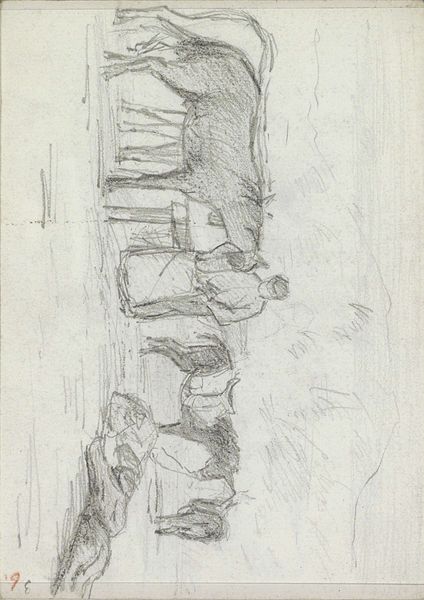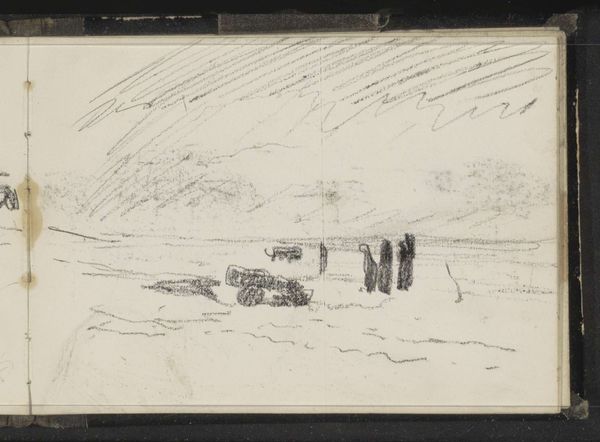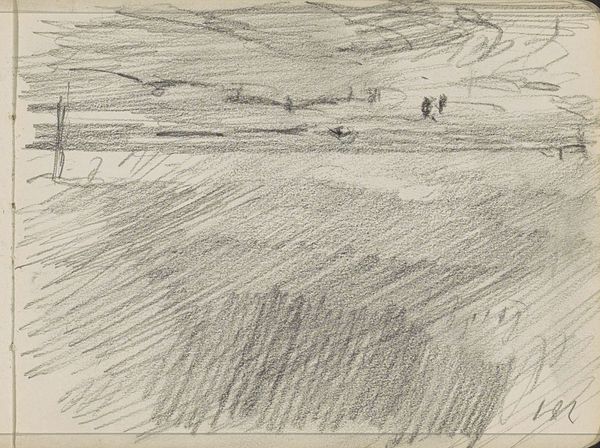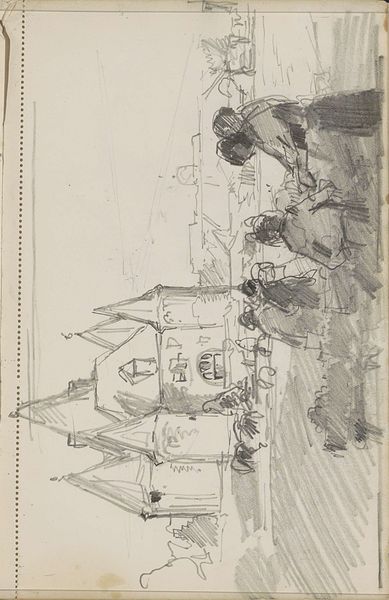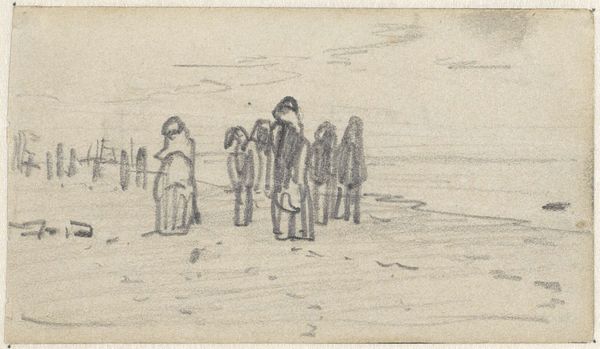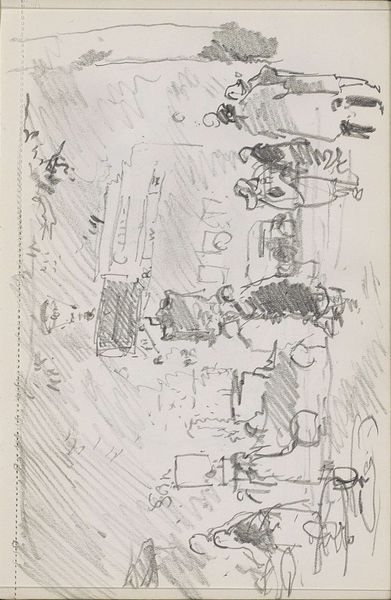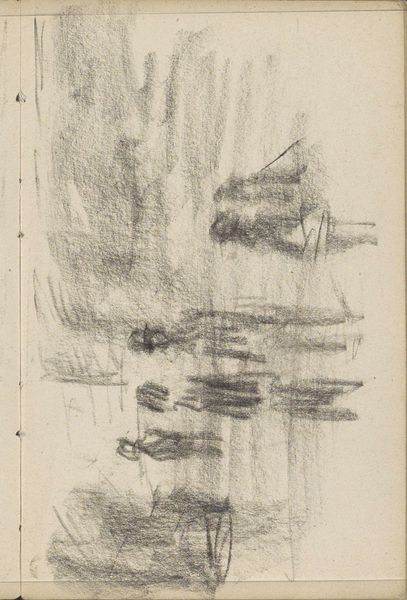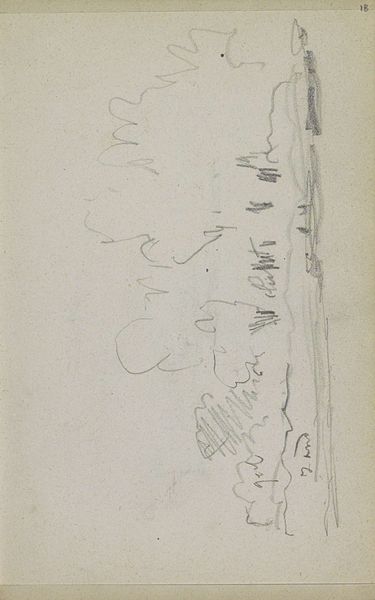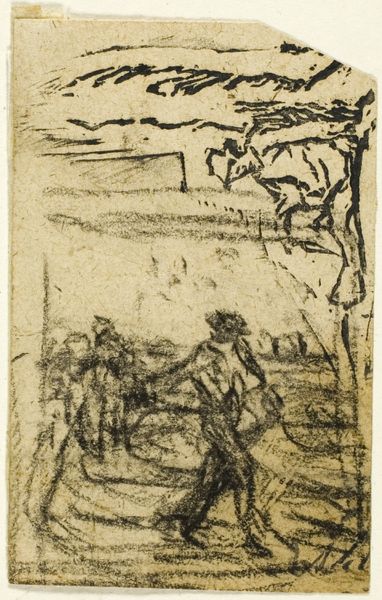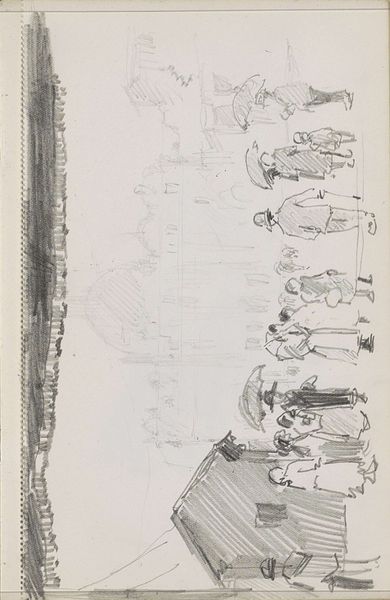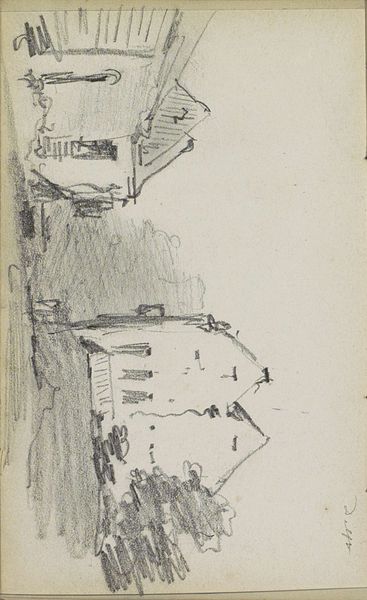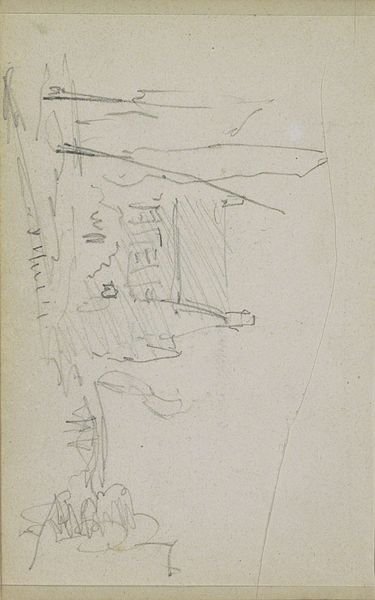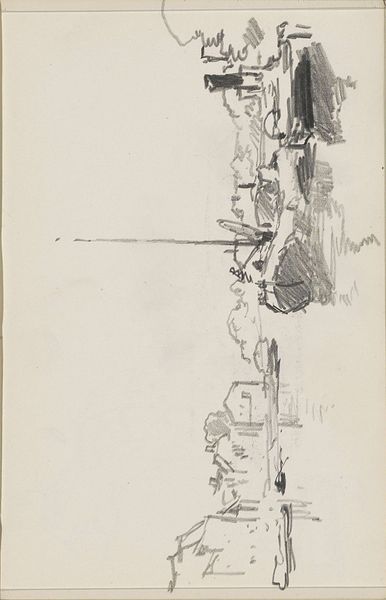
drawing, pencil
#
drawing
#
impressionism
#
pencil sketch
#
landscape
#
pencil
#
realism
Copyright: Rijks Museum: Open Domain
Curator: Looking at Anton Mauve’s pencil sketch, dating somewhere between 1848 and 1888, entitled "Wicker Chairs and Figures on the Beach," I find myself captivated by its minimalist charm. Editor: It strikes me as unfinished, almost ghostly. The muted tones create a serene yet melancholic mood. Are those indistinct shapes people sitting in chairs, or just my imagination filling in the gaps? Curator: The pencil, as a readily available material, speaks to the artist's immediate engagement with his surroundings. Beach scenes became increasingly popular with the rise of leisure culture, providing both subject matter and a space to observe social dynamics. Consider the chairs; their wicker construction likely involved specific artisanal labor, pointing to a wider network of production and consumption linked to tourism. Editor: Right, but focusing purely on the visual, note how Mauve uses line weight to differentiate the foreground figures from those further back. This is masterful work, making great use of depth. How are we meant to read those almost chaotic smudges representing crowds? Curator: Perhaps, it's worth pondering on what he sought to capture, those pencil marks weren’t accidental. Could these impressions reflect his observation of the public's interaction with leisure and their own performance of societal position. Editor: I read these beach goers as symbols of leisure but within this context these individuals, indistinct yet present, feel utterly lost in their own private worlds. The horizon is absent and a very limited perspective adds to my sensation. Curator: Such constraints can often challenge both the creator and consumer, what appears lacking, perhaps, inspires active engagement as opposed to easy gratification? Editor: The starkness certainly prompts introspection. By looking past the social circumstances of art making, can the simple formal structure encourage active participation from the beholder as they fill in details, interpret shading, and assign feelings? Curator: Exactly! So many aspects of an artwork exist only once they’re actually processed by an audience. It all becomes intrinsically linked. Editor: Well, Mauve's subtle variations in line and tone allowed us a surprisingly insightful glimpse into both material context and individual experience.
Comments
No comments
Be the first to comment and join the conversation on the ultimate creative platform.
